by David T. Gura, Ph.D., Curator, Ancient and Medieval Manuscripts
With the passing of the Holy Father, Franciscus PP I, the Church has entered a state of transition in which there is currently no pope (sede uacante). With the interment of Francis on April 26, 2025, the Novendiales (nine-day mourning period) began. After the Novendiales conclude on May 4, the process by which the next pope is elected will begin. The cardinals will enter into the Conclave on May 7, and all officials and attendants will swear the prescribed oaths and the appropriate attendees will enter the Sistine Chapel. The term ‘conclave’, from the Latin cum claue (lit. ‘with a key’), refers to an area that can be locked up, since no one may enter or leave until the new pope has been elected.
The May spotlight exhibit features a depiction of the Papal Conclave of 1700 by Domenico de Rossi. The Conclave began on October 9, after the death of Innocentius PP XII, and ended on November 23, when Giovanni Francesco Albani was elected pope. Albani had been ordained to the priesthood in September of the same year, though he had been a cardinal for the previous ten years. He celebrated his first Mass only three days before he was elected. Albani then became Clemens PP XI when he was consecrated as bishop on November 30, and his papal coronation took place on December 8.
The cycle of illustrations around the edges shows the events and processes of electing a new pope. Since the Conclave is not public, the images depict its activities. The large illustration in the center shows St. Peter’s and the sixty-six cells for the cardinal electors during the Conclave. Their names are listed in the bottom of the print. Some interesting vignettes are the following:
The Pope’s Death and Destruction of the Fisherman’s Ring
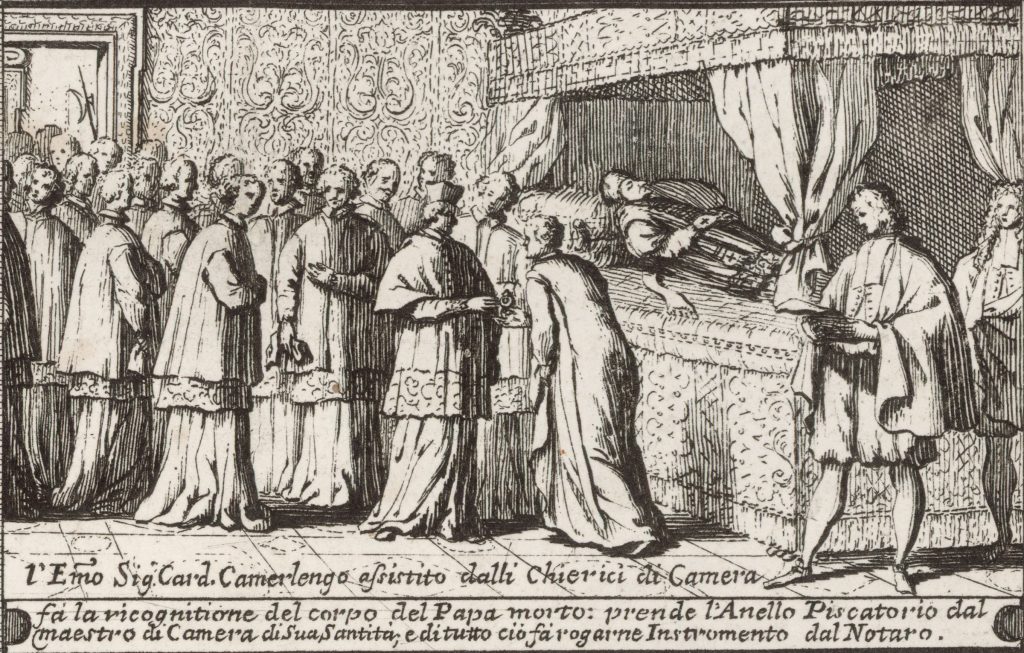
The pope’s seal (bulla) and Fisherman’s Ring (Anulus piscatoris) are broken by the Camerlengo in the presence of the cardinals. This signifies the end of his pontificate and prevents the creation of fraudulent documents.
Processions
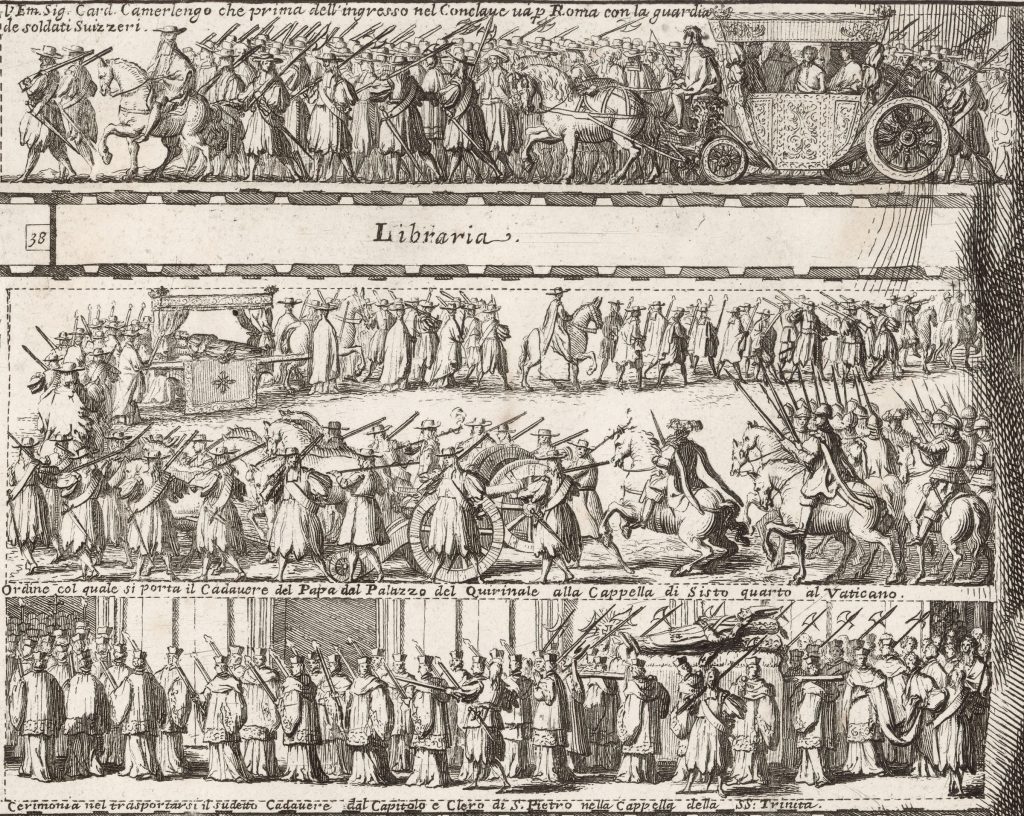
Three separate processions are depicted: (1) the Cardinal Camerlengo into the conclave; (2) the pope’s body to the Sistine Chapel from the Quirinal Palace (if he died there); (3) the body of the deceased pope to the Chapel of the Blessed Sacrament in St. Peter’s.
The Pope’s Body Lying in State
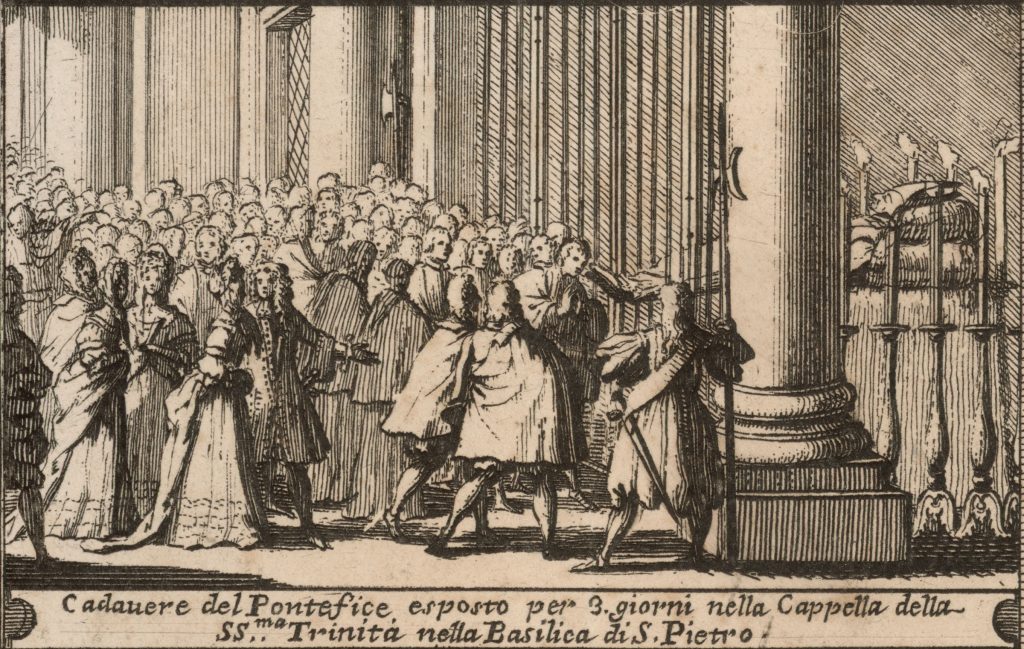
The pope’s body lies in state publicly for three days in the Chapel of the Blessed Sacrament.
Requiem Masses and the Novendiales
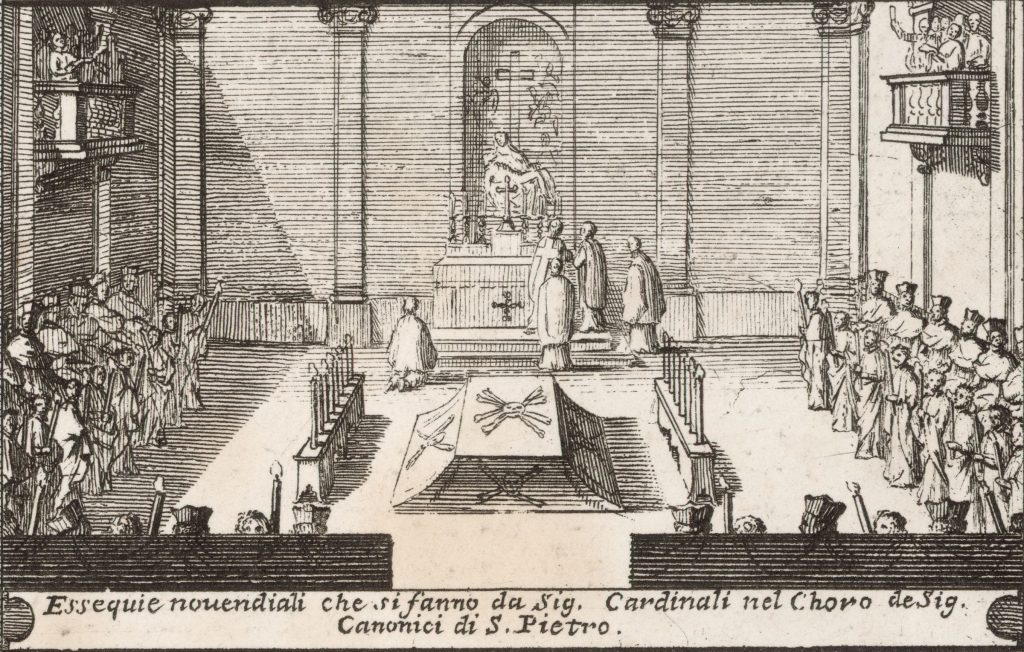
Requiem Masses were celebrated for nine days in the Choir Chapel of St. Peter’s during the Novendiales (nine-day mourning period). The body was usually buried before this period and thus not present. The Conclave can be convened only after the interment. This vignette depicts the four cardinals who come to the altar to change into black pluvials and mitres for the ritual of absolution, after candles are distributed to all cardinals and the funeral oration is completed.
Mass of the Holy Spirit
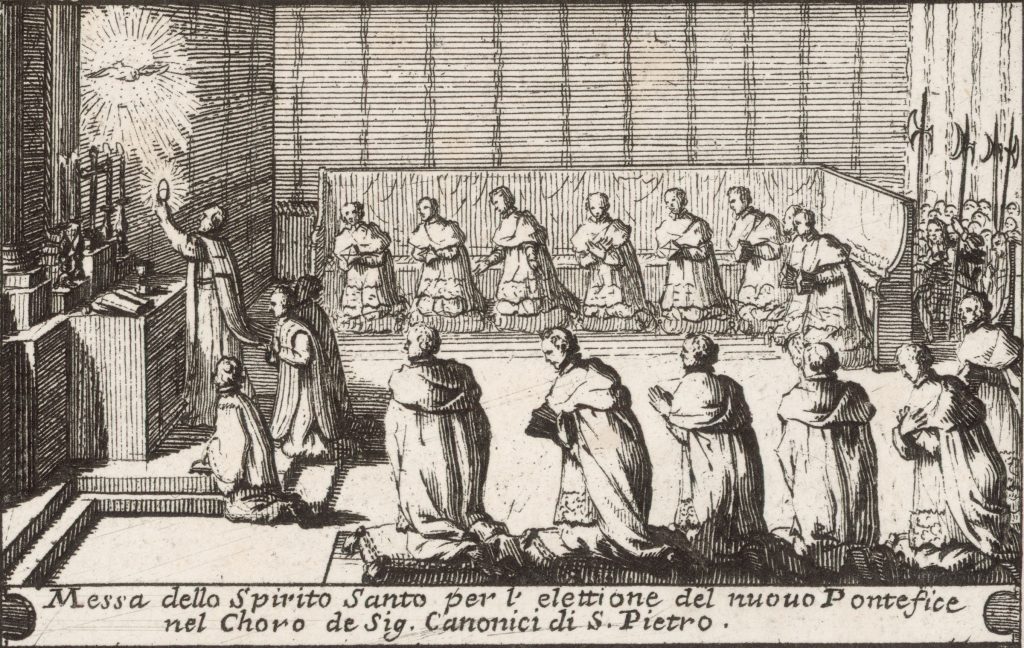
The cardinals celebrate the Mass of the Holy Spirit before the beginning of the Conclave. This vignette depicts the traditional celebration of the Mass where the celebrant faces ad orientem (literally, “to the east”). The Holy Spirit is depicted in the form of the radiate dove.
Cardinals Entering the Conclave
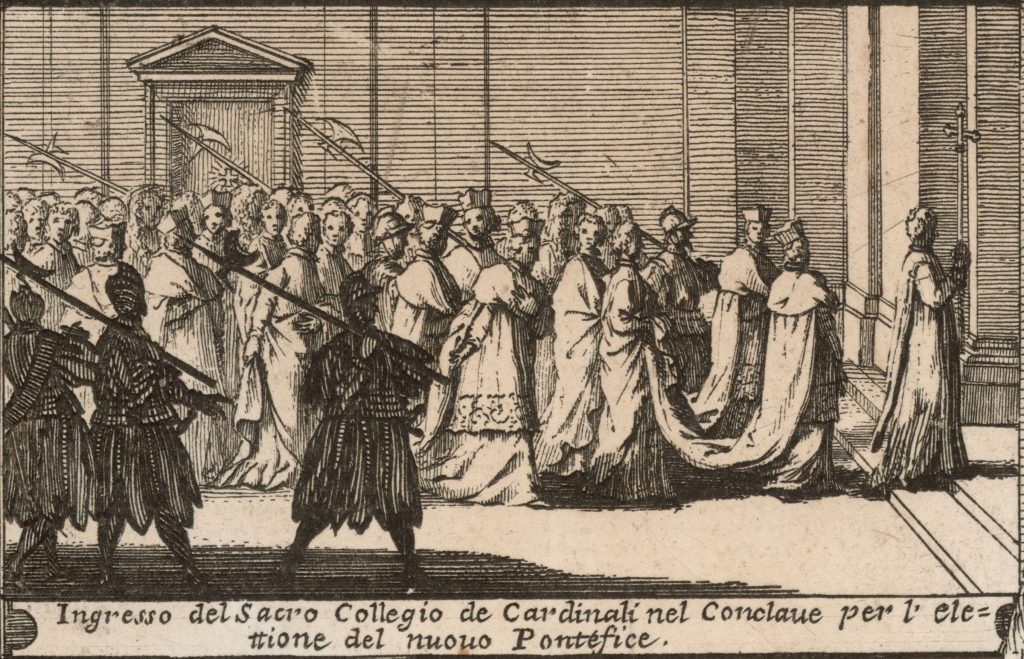
The cardinals enter the Conclave to elect the new pope after the Novendiales were finished. The term ‘conclave’ originates from the Latin phrase cum clave (with a key), since the cardinal electors are locked in seclusion until a new pope is elected.
Voting Sessions
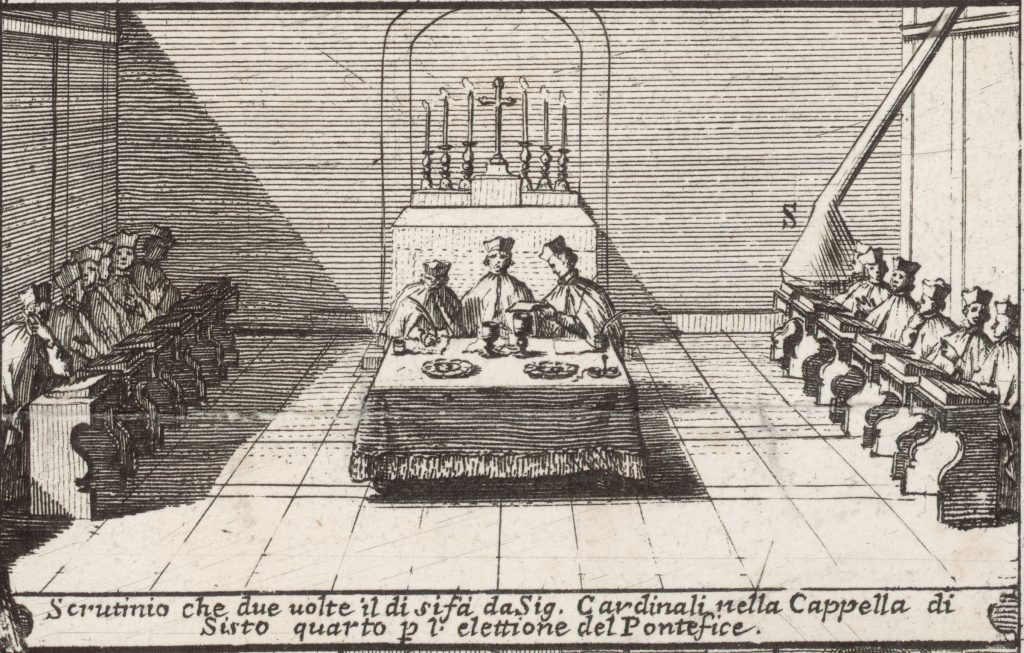
The cardinal electors cast their votes, the votes are tallied, then the ballots are burned. If no election is made, straw is added to blacken the smoke. If a new pope is elected, the smoke will be white. The stove with a chimney can be seen to the right.
Food Brought to the cardinals
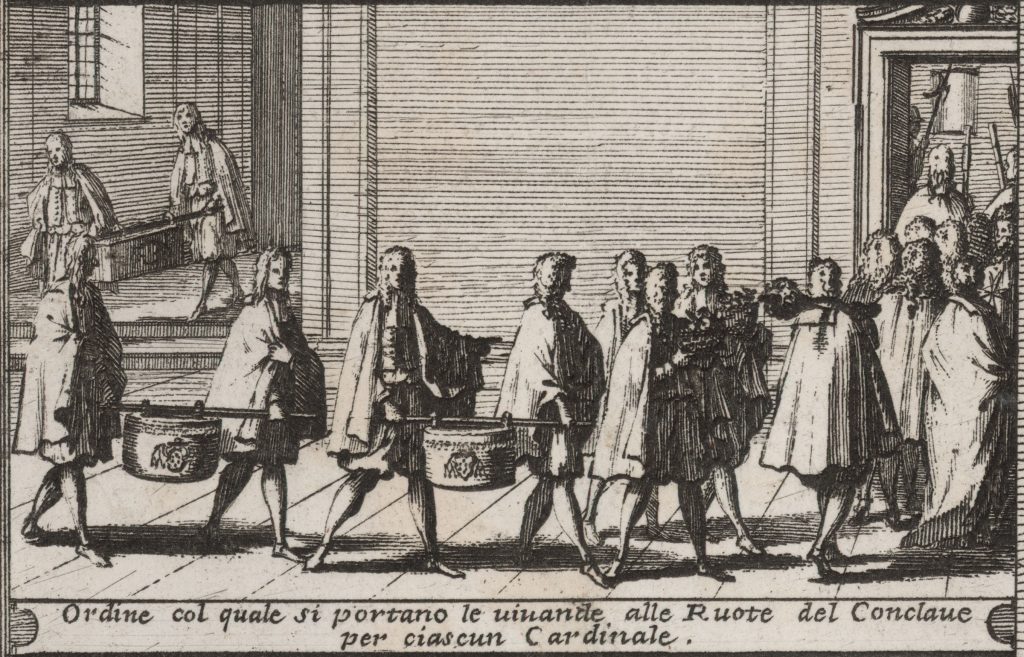

Since the cardinal electors cannot leave the Conclave, food is brought to them twice per day. The victuals in these vignettes are transported in baskets specifically marked for each cardinal with their coats of arms. The meals are delivered to the cardinal electors through rotating hatches
First Homage to the New Pope
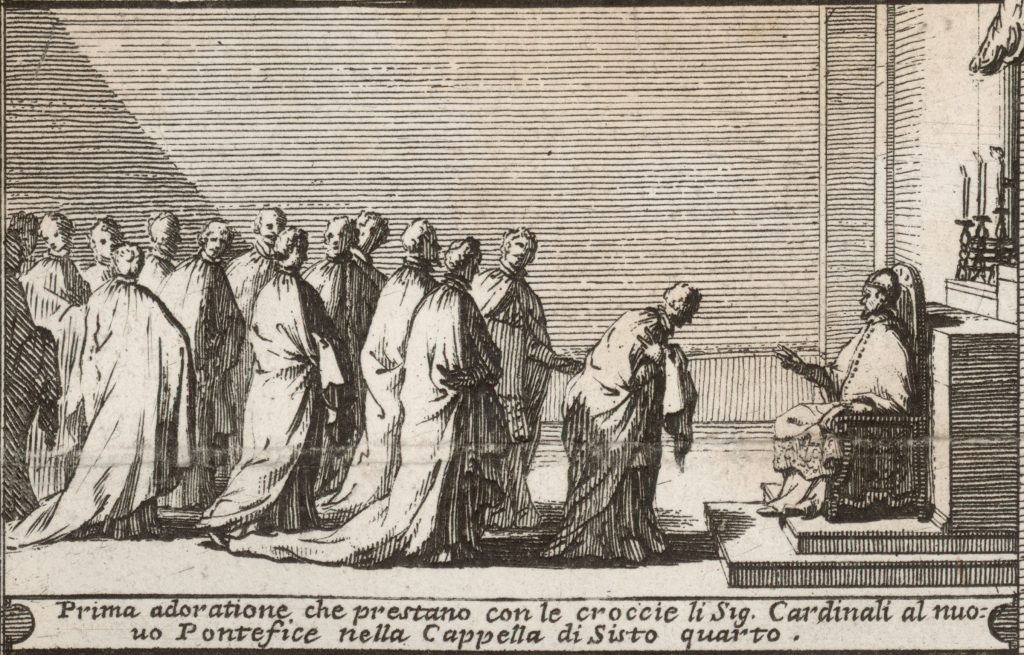
The newly elected pope accepts his canonical election and chooses his name. The cardinal electors pay homage and pledge obedience in the Sistine Chapel. The Holy Father usually then appoints or confirms the Cardinal Camerlengo, who places the Fisherman’s Ring on his finger.
Transportation from the Sistine Chapel to St. Peter’s
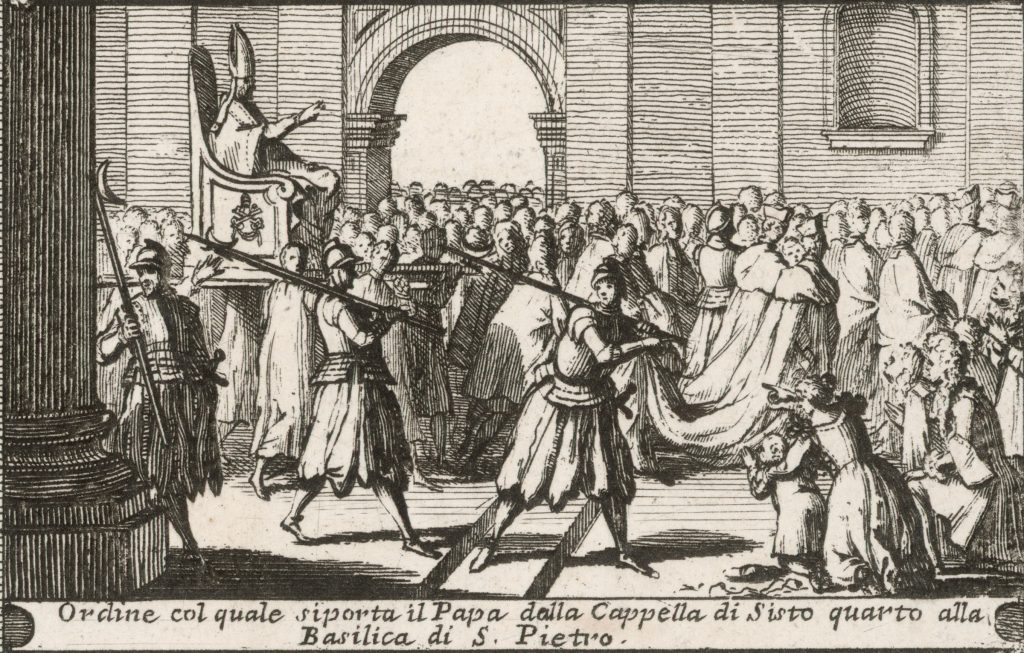
The new pope is then transported from the Sistine Chapel to St. Peter’s to give the apostolic blessing, Vrbi et orbi.
Subsequent Homage to the New Pope
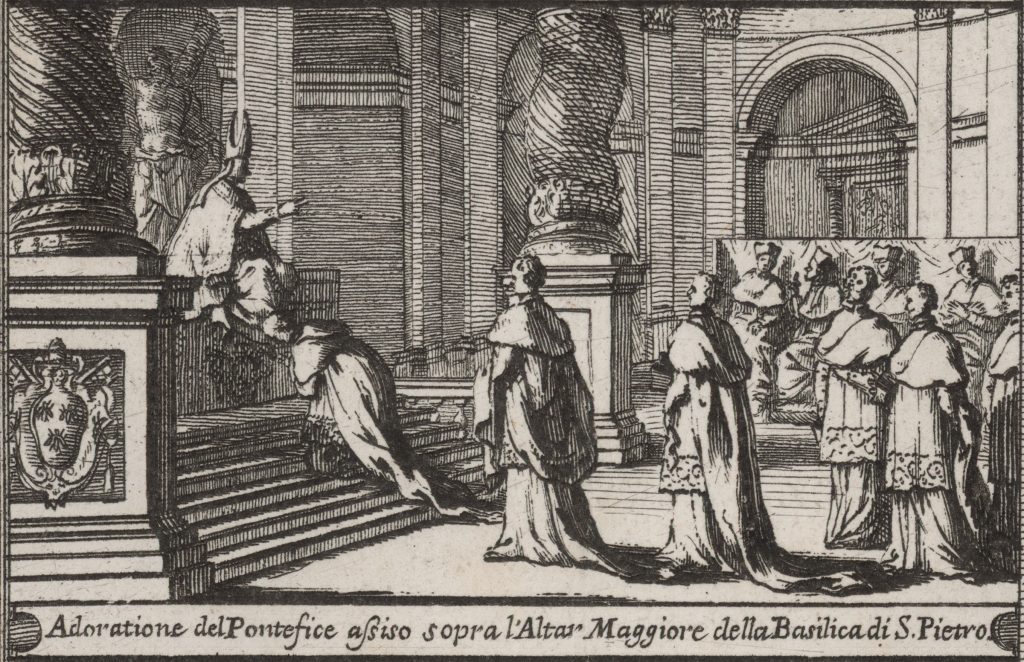
This vignette depicts subsequent homage (adoratio) to the new pope in St. Peter’s above the Papal Altar (l’altare maggiore).
